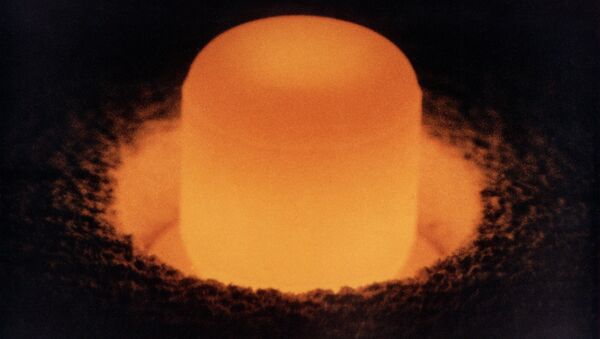WASHINGTON, September 26 (RIA Novosti) – NASA’s deep space exploration program could face the ax as global supplies of the plutonium-238 nuclear fuel used to power spacecraft like Voyager and the Mars Curiosity rover dry up, media reports and NASA memos show, with some of them blaming Russia for the problem.
A story in the tech and science publication Wired said last week that the United States’ scientific stockpile of plutonium-238, which is largely a by-product of nuclear weapons’ production, is down to 36 pounds (16.3 kilograms).
To show just how little that is, the battery that powers the rover Curiosity contains about 10 pounds (4.5 kilograms) of plutonium.
“We’ve got enough to last to the end of this decade. That’s it,” Steve Johnson, a nuclear chemist at Idaho National Laboratory, told Wired.
Plutonium-238 does not occur in nature but is created mainly as a byproduct of bomb-grade plutonium-239.
The United States stopped making plutonium-238 in the 1980s, and turned to Russia for supplies of the radioactive isotope.
According to Wired, the first Russian batch of plutonium-238 was sold to the United States in 1993. Ironically, the amount sold was 36 pounds – the same quantity NASA still has today.
Russia was “the planet’s sole supplier” of plutonium-238, “but it soon fell behind on orders. In 2009, it reneged on a deal to sell 22 pounds (10 kilograms) to the US,” Wired said.
In an attachment to a letter calling for US production of plutonium-238 to be restarted, NASA Administrator Charles Bolden said in 2010 that the amount of plutonium-238 “available from Russia will not meet the need for robotic planetary exploration into the next decade” and that, in any case, “Russia has stopped shipment” of the radioactive isotope.
Alan Newhouse, a retired nuclear space consultant who played a key role in the first purchase of Russian plutonium-238 back in the 1990s, told Wired that he had heard that Russia has no more plutonium-238 left to sell.
But it’s not just Russia’s fault. US scientists’ pleas for what they say is a relatively modest $10 to 20 million in funding each year through 2020 to restart US plutonium-238 production have fallen on deaf ears in Congress, Wired said.
With that amount of funding, the United States would be able to make between 3.3 and 11 pounds (1.5-5.5 kilograms) of plutonium-238 annually — “plenty to keep a steady stream of spacecraft in business,” Wired wrote.
The United States has restarted production but on a small scale. NASA's planetary science division head Jim Green said in March that NASA expects to have “a plan from the Department of Energy on how they'll be able to satisfy our requirement of 1.5 to 2 kilograms (3.3 – 4.4 pounds) a year," wrote web-based science, research and technology news service PhysOrg.
But the shortage persists, and Planetary Society blogger Casey Dreier lamented last week that “it would truly devastate the future of planetary exploration if we run out” of plutonium-238.
In fact, space exploration is already suffering because of the shortage, with “any of the eight deep-space robotic missions that NASA had envisioned over the next 15 years already delayed or canceled,” according to Wired.


